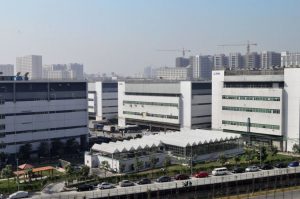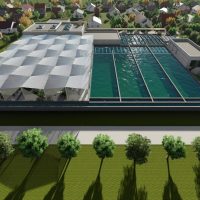Posted on September 29, 2015
Just because you can’t see it doesn’t mean it isn’t there
by Alex Shao, Sales & Business Development Manager (China) at Organica Water
Recent years have seen an uptick in underground wastewater treatment projects across China. In cities such as Shanghai, Guangzhou, Kunming, Hefei, and Qingdao, more than 50 underground wastewater treatment plants are either in operation or under construction, despite the industry’s conservatism in adopting new technologies. This accelerated development is in no small way related to the rise of a middle class in China, with a still-significantly growing economy and rapid urbanization demanding that use of available land and water resources be maximized to their full potential.
Why Go Underground?
The process of site selection is always a headache when it comes to building a wastewater treatment plant. Besides the large footprint of a traditional wastewater treatment plant, local regulations usually require a consistent radius of more than 300 meters around the operational area of the facility. Even with such a big buffer zone though, given the odor and the ugly appearance of traditional facilities, land values around a wastewater treatment plant tend to be depressed. In order to strike a balance between an undesirable wastewater treatment plant, scarce land resources and protecting the environment, an underground facility is favored as a temporary solution. At least it is “friendly” above the ground.
Just Because You Can’t See It, Doesn’t Mean It Isn’t There
However, there are problems with an underground wastewater treatment plant that you might not be aware of:
- First of all, underground facilities do not change the wastewater treatment process itself – the amount of sludge produced, treatment efficiency, odor control and so on remains the same whether the facility is above or underground.
- Second, the CAPEX of an underground facility is much higher than a traditional one – roughly double the investment, from my experience. With more requirements for civil work, equipment and labor, as well as higher energy cost, the expenses needed to mask the facility strays too far away from the definition of a friendly solution.
- Third, the design and operation of an underground facility is very complicated. For example, the ventilation needs to be designed in a special way in order to prevent the potential risk of odor and chemicals in an enclosed space.
- Last but not least, upgrading the underground facility is almost impossible. The pace of China’s urbanization is dramatically different from what has occurred in past centuries. An underground facility is not flexible enough to meet expanding capacity needs and improved discharge standards.
Globally, the idea of an underground wastewater treatment plant originated in the 1980’s. At that time, it was not widely applied in practice, mainly because of certain problems. Although there are some references, of which the motion are totally different. For example, in Northern Europe, an underground wastewater treatment plant was built due to the extremely low temperature. In other countries like Singapore and Japan, the reason for going underground was severe land scarcity.
The boom of the underground wastewater treatment plant in China has experts and regulators monitoring the situation carefully. In the short-term, it may be a way to preserve land value. But it is not sustainable in the long run. In fact, instead of hiding the facility from public sight, we believe the right way to solve the problem is to change the traditional wastewater treatment plant altogether.
At Organica Water, we provide solutions that can meet the needs of rapid urbanization – minimizing the CAPEX and OPEX, reducing the physical and psychological footprints, all while preserving land value. Learn more about how we did this in China without having to go underground.



